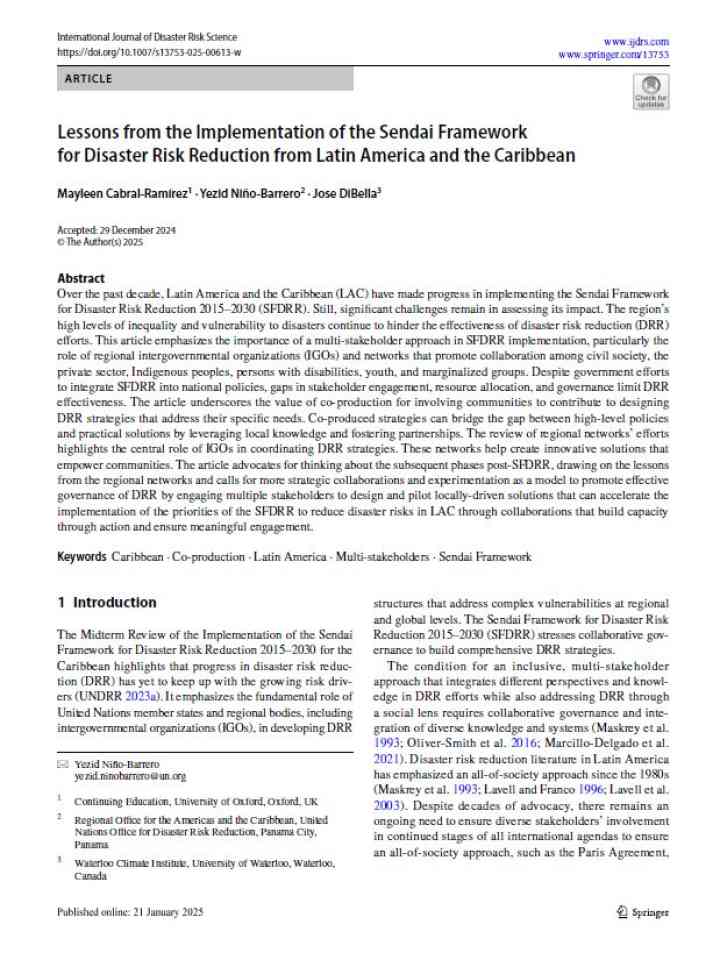Lessons from the implementation of the Sendai Framework for Disaster Risk Reduction from Latin America and the Caribbean
This article emphasizes the importance of a multi-stakeholder approach in Sendai Framework for Disaster Risk Reduction 2015–2030 (SFDRR) implementation, particularly the role of regional intergovernmental organizations (IGOs) and networks that promote collaboration among civil society, the private sector, Indigenous peoples, persons with disabilities, youth, and marginalized groups. Despite government efforts to integrate SFDRR into national policies, gaps in stakeholder engagement, resource allocation, and governance limit DRR effectiveness.
The article underscores the value of co-production for involving communities to contribute to designing DRR strategies that address their specific needs. Co-produced strategies can bridge the gap between high-level policies and practical solutions by leveraging local knowledge and fostering partnerships. The review of regional networks’ efforts highlights the central role of IGOs in coordinating DRR strategies. These networks help create innovative solutions that empower communities. The article advocates for thinking about the subsequent phases post-SFDRR, drawing on the lessons from the regional networks and calls for more strategic collaborations and experimentation as a model to promote effective governance of DRR by engaging multiple stakeholders to design and pilot locally-driven solutions that can accelerate the implementation of the priorities of the SFDRR to reduce disaster risks in LAC through collaborations that build capacity through action and ensure meaningful engagement.
Explore further
